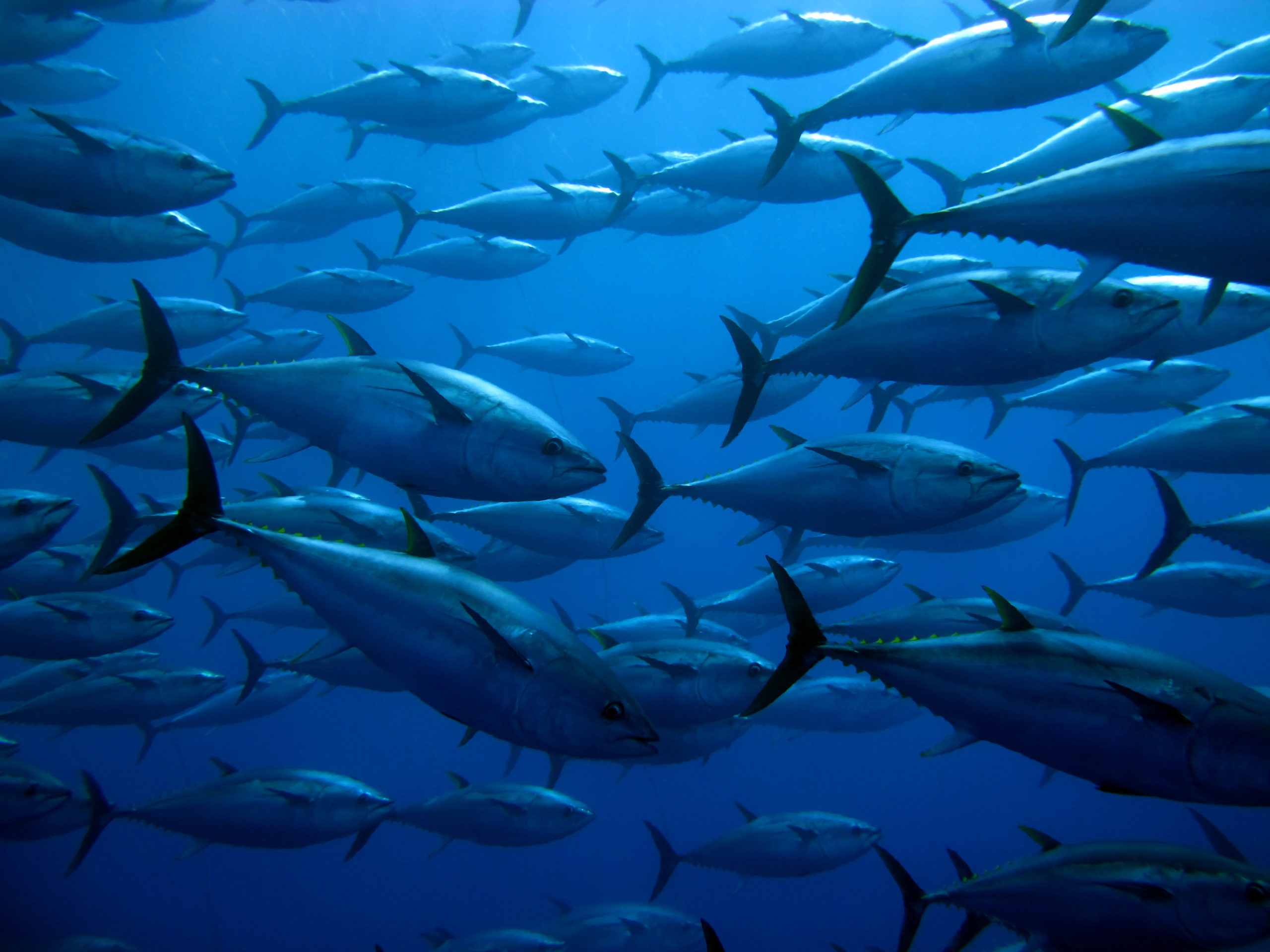To celebrate World Tuna Day in 2025, this article details the risks and challenges facing the species and how sustainable consumer choices can help moving forwards.
Tuna is a valuable and widely consumed fish, rich in essential nutrients including omega-3 fatty acids, vitamin B12, vitamin D, selenium, iodine, and high-quality proteins. It plays a crucial role in the diet of millions of people worldwide. However, tuna faces numerous challenges, including:
The rising demand
The annual global production of tuna and tuna-like species has surged from less than 0.6 million metric tons in 1950 to approximately seven million metric tons in recent years. Population growth has primarily driven this increase. As the global population continues to expand, the demand for tuna keeps rising, placing considerable pressure on tuna fisheries and leading to potential over-exploitation of tuna stocks.
Furthermore, the aging population in many parts of the world affects consumption patterns. Older adults often prioritize healthier diets and choose tuna for its omega-3 fatty acids, high protein content, and low calories and fat. This shift in dietary preferences can further amplify the demand for tuna, straining fisheries further.
Climate warming
As global climate change accelerates, the average global temperature rise has surpassed 1.5°C since 2023, compared to pre-industrial levels. The IPCC projects a possible rise of over 3°C above the 1850-1900 average by the end of the century.
This warming trend has significant implications for marine ecosystems and tuna populations, including:
• Forced migration to cooler waters, increasing operational costs and potential economic strain on fisheries.
• Disruption of spawning and feeding habitats, resulting in reduced reproductive success and tuna biomass size.
• Disruption of plankton and other essential food sources, affecting tuna growth rates and reproductive capacities.
• Increased vulnerability to overfishing due to combined effects of disrupted spawning, shifting distributions, and altered food availability, potentially leading to further declines in tuna stocks.
Ocean pollution
Ocean pollution is a growing concern for tuna and other marine life. As a migratory species, tuna may encounter various pollutants throughout their vast range, making them susceptible to several adverse effects: 1). Ingesting plastic particles can lead to malnutrition, decreased population sizes, and higher mortality rates. 2). Accumulating heavy metals such as mercury and cadmium through the food chain can reduce spawning success.
3). Exposure to chemical pollutants, including industrial chemicals and oil spills, can disrupt endocrine functions and diminish the overall fitness of tuna.
Unsustainable fishing practice
Common unsustainable fishing practices include overfishing and illegal, unreported, and unregulated (IUU) fishing. Due to their high market value and global demand, tuna populations have been subjected to intense fishing pressure, which can lead to a significant decline in their numbers and disrupt the balance of marine ecosystems. IUU fishing not only depletes tuna stocks, but also undermines the effectiveness of management measures and conservation efforts, posing a threat to tuna populations.
Sustainable tuna conservation strategies
To address the challenges faced by tuna, various sustainable conservation and management strategies have been implemented, although their coverage and effectiveness need to be further improved.
These efforts include:
1. Establishing marine protected areas to safeguard critical habitats.
2. Implementing science-based harvest strategies, such as setting catch limits and adjusting fishing efforts, to promote sustainable fishing practices.
3. Utilizing technologies to monitor fishing activities, enhance management practices, and reduce IUU fishing.
4. Raising public awareness about the importance of sustainable tuna fisheries.
Sustainable consumer choices
Here are some guidelines on sustainable consumer choices for tuna:
1. Look for MSC certification. The Marine Stewardship Council (MSC) certification signifies that the tuna has been sourced from a sustainable fishery. Choosing tuna with the MSC blue label is an environmentally responsible option.
2. Avoid overfished species. Some tuna species, like bluefin, are critically overfished and should be avoided. Instead, skipjack and albacore tuna are considered more sustainable options due to their shorter lifespans and faster reproduction rates.
3. Limit consumption of larger tuna species. Larger tuna species, such as albacore and bluefin, tend to accumulate higher levels of mercury in their tissues. To minimize health risks, it is advisable to choose smaller tuna varieties like skipjack.
4. Prioritize fresh or frozen tuna. Fresh or frozen tuna is a better choice than canned tuna in terms of both quality and nutritional value. Additionally, these forms of tuna are less likely to contain contaminants found in canned products.
5. Avoid overconsumption. While tuna is a nutritious food, overconsumption can lead to an excessive intake of mercury and other contaminants. Therefore, it is important to balance tuna consumption with other protein sources.
Adopting these practices not only fosters a healthier diet but also helps to safeguard tuna populations and support the sustainability of marine ecosystems.



